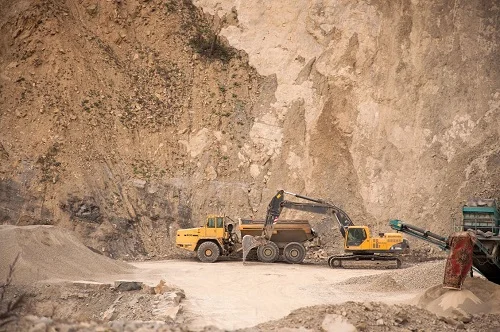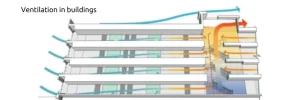Drilling and blasting is a widely used method in various industries, including mining, construction, and quarrying, to break rock for excavation purposes. This technique involves drilling holes into the rock formation and then using controlled explosions to fragment the material. While it is a powerful and efficient method, it requires careful planning and execution to ensure safety and minimize environmental impact. This article will delve into the details of drilling and blasting, exploring its importance, process, benefits, and considerations.
Why is drilling and blasting important?
Drilling and blasting is an essential process in many industries due to its ability to:
- Break rock efficiently: It is a cost-effective and time-saving method for breaking large volumes of rock.
- Create desired shapes: Controlled blasts can be used to create specific shapes and contours for excavations.
- Prepare for further construction: Drilling and blasting can prepare the ground for subsequent construction activities, such as tunneling or road building.
What does the process of drilling and blasting entail?
The drilling and blasting process typically involves the following steps:
- Drilling
- Drill hole preparation: The area to be blasted is marked out, and drill holes are carefully planned and drilled into the rock formation. The depth and spacing of the holes depend on the type of rock, desired fragmentation, and safety considerations.
- Drill hole equipment: Various types of drilling equipment, such as jackhammers, rotary drills, or tunnel boring machines (TBM), can be used depending on the scale and nature of the project.
- Explosive charging
- Explosive selection: The appropriate type of explosive is selected based on the rock type, desired fragmentation, and safety requirements. Common explosives include dynamite, ANFO (ammonium nitrate fuel oil), and water gels.
- Explosive placement: The explosives are carefully placed within the drilled holes, ensuring proper distribution and spacing. Detonators are attached to the explosives to initiate the blast.
- Blasting
- Controlled detonation: The detonators are activated in a controlled sequence to initiate the blast. The timing and sequence of detonation are critical for achieving the desired fragmentation and minimizing vibration.
- Blast effects: The explosion creates a shockwave that propagates through the rock, causing it to fracture and break apart. The resulting debris is typically removed using dump trucks or other hauling equipment.
- Ventilation
- Air quality management: After the blast, proper ventilation is essential to remove harmful gases and dust from the work area. This helps to protect the health and safety of workers.
- Ventilation planning: Ventilation plans should be developed prior to the blast, considering factors such as the type of explosives used, the size of the excavation, and the prevailing wind conditions. Adequate ventilation should be maintained throughout the blasting and post-blast operations to ensure a safe working environment.
- Mucking & scaling
- Debris removal: The blasted rock, or “muck,” is removed from the excavation site using appropriate equipment, such as loaders or excavators.
- Scaling: Any loose rock or unstable walls are scaled to ensure the safety of workers and prevent further rockfalls.
- Installing initial ground support
- Ground stabilization: In underground excavations, rock bolting and other ground support measures may be necessary to stabilize the rock and prevent collapses. This can involve installing cable bolts, ribs or mining arches and lagging, or other support structures.
- Ground support design: Ground support systems should be designed by qualified engineers to ensure adequate stability and safety. The design should consider factors such as the rock strength, the expected loads, and the potential for ground movement. Regular inspections and maintenance of ground support systems are essential to prevent failures and ensure the safety of workers.
What are the benefits of drilling and blasting?
Drilling and blasting offer several advantages, including:
- Efficiency: It is a highly efficient method for breaking rock, allowing for rapid progress on projects.
- Versatility: It can be used in various applications, from mining to construction.
- Cost-effectiveness: In many cases, drilling and blasting is a more cost-effective option compared to other excavation methods.
Considerations and challenges
While drilling and blasting is a powerful tool, it also presents certain challenges and considerations:
- Safety: Blasting operations must be carefully planned and executed to minimize risks to workers and the surrounding environment.
- Vibration: Blasting can generate vibrations that may affect nearby structures or cause noise pollution.
- Environmental impact: The use of explosives and the generation of dust and debris can have environmental implications.
- Ground conditions: The effectiveness of drilling and blasting can be influenced by the type and condition of the rock being excavated.
Conclusions
Drilling and blasting is a valuable technique for breaking rock in various industries. By understanding the process, benefits, and challenges associated with this method, engineers and contractors can effectively plan and execute drilling and blasting operations to achieve their project objectives while minimizing risks and environmental impacts.
Recommendations
- Thorough planning: Careful planning is essential for successful drilling and blasting operations, including site assessment, drill hole design, explosive selection, and safety measures.
- Qualified personnel: Ensure that personnel involved in drilling and blasting are properly trained and experienced.
- Adherence to regulations: Comply with all relevant safety regulations and environmental standards.
- Continuous monitoring: Implement monitoring systems to track vibration levels, air quality, and other environmental parameters.
- Advance notification: Provide advance notice to nearby residents and businesses about planned blasting activities.
By following these recommendations, organizations can safely and effectively utilize drilling and blasting to achieve their project goals.






